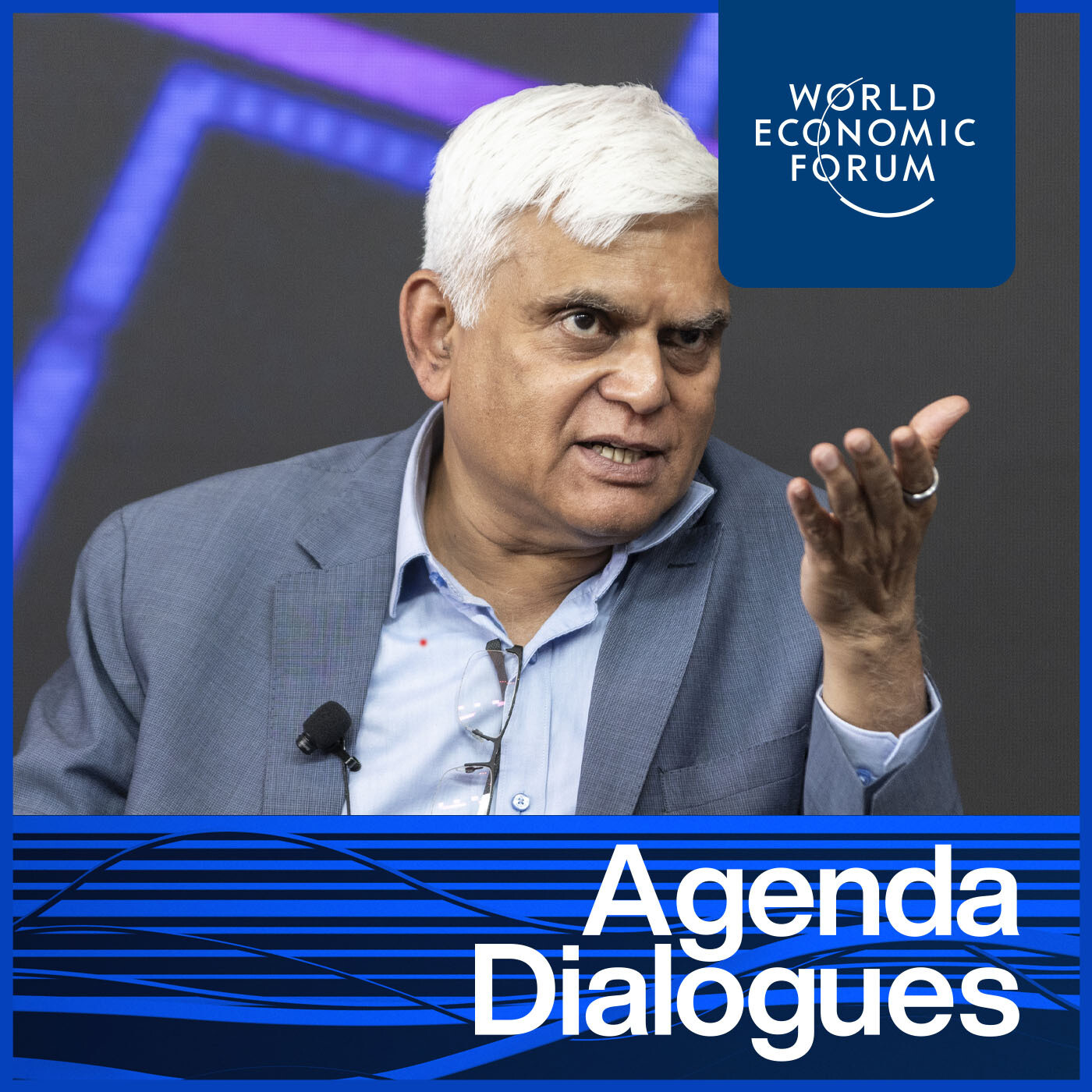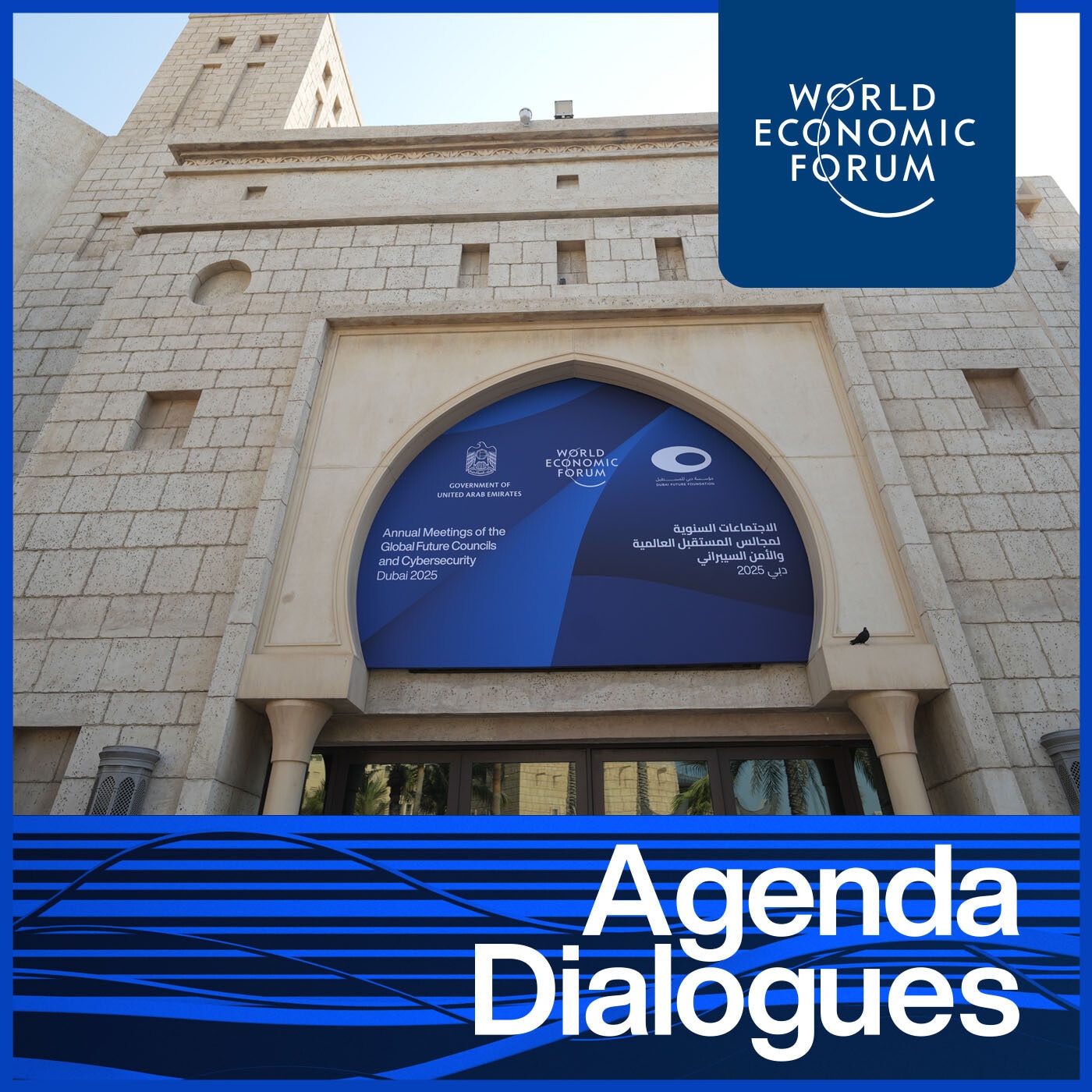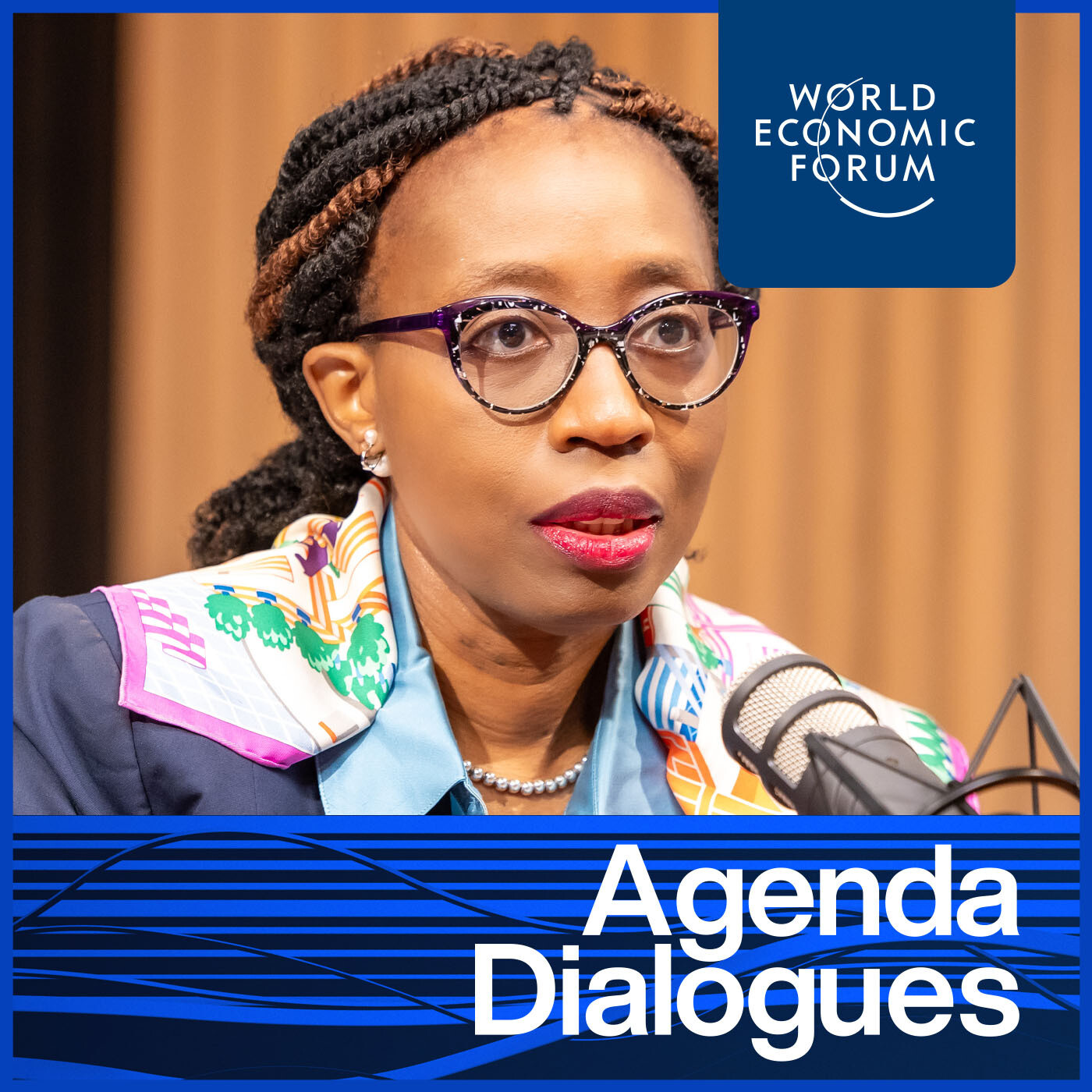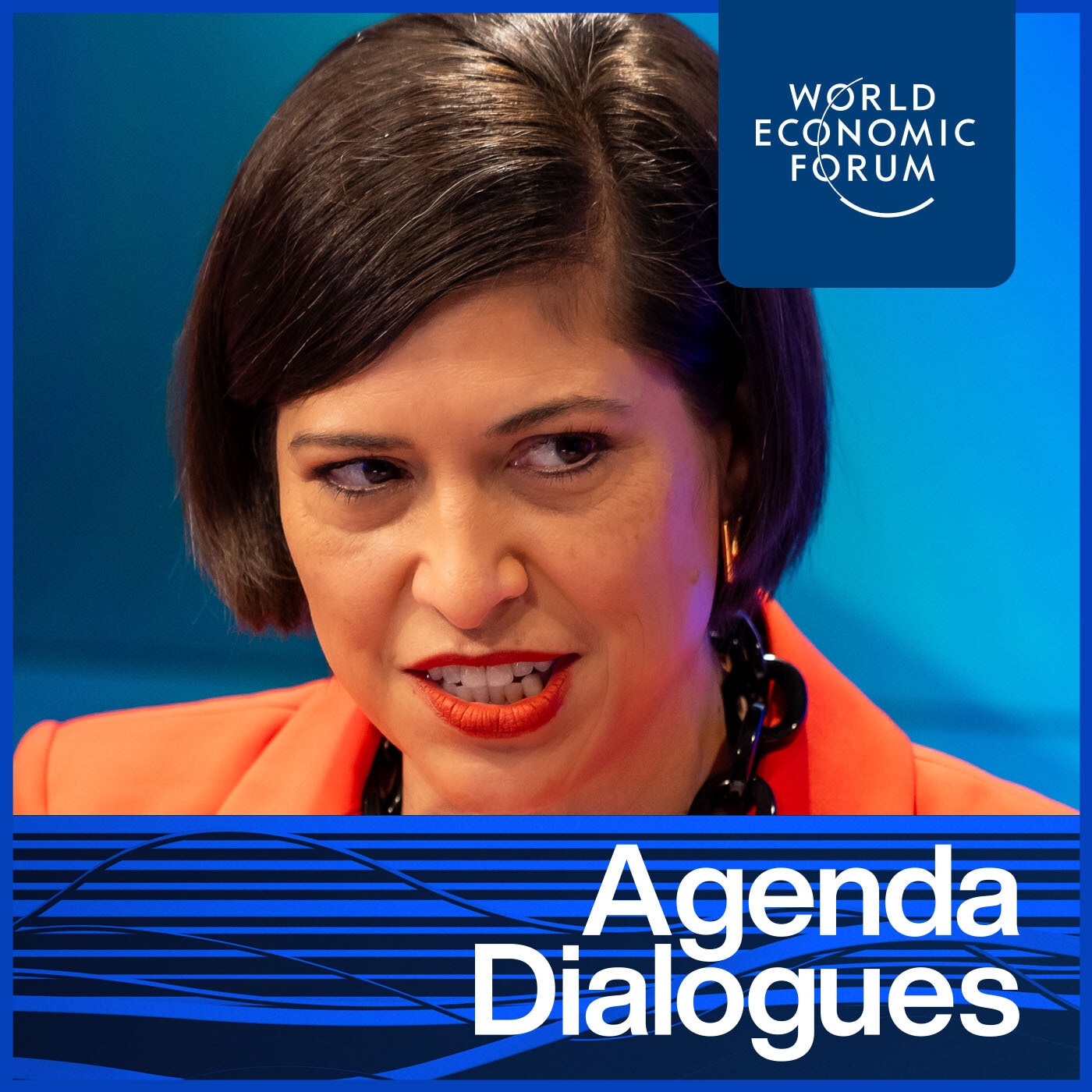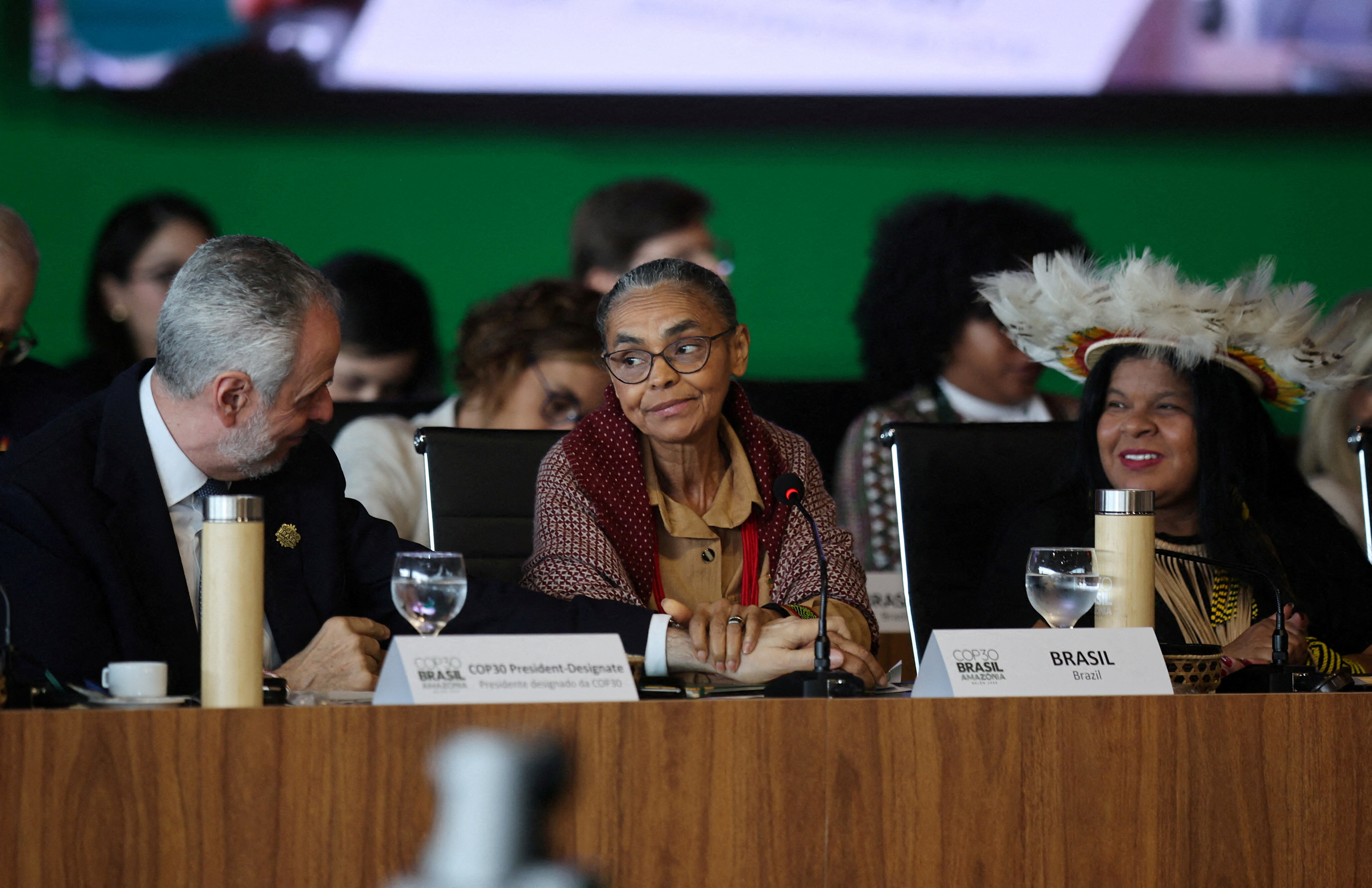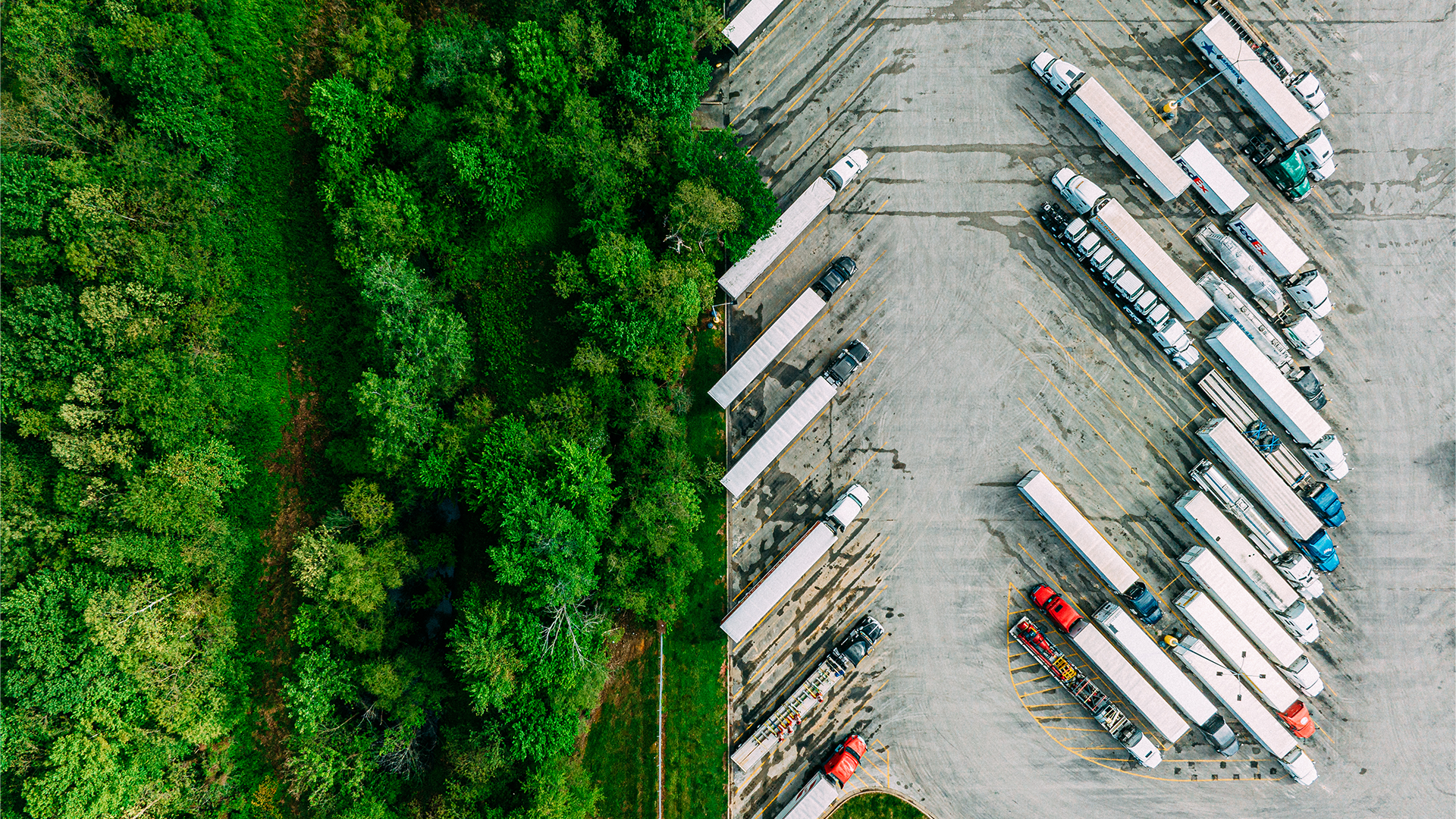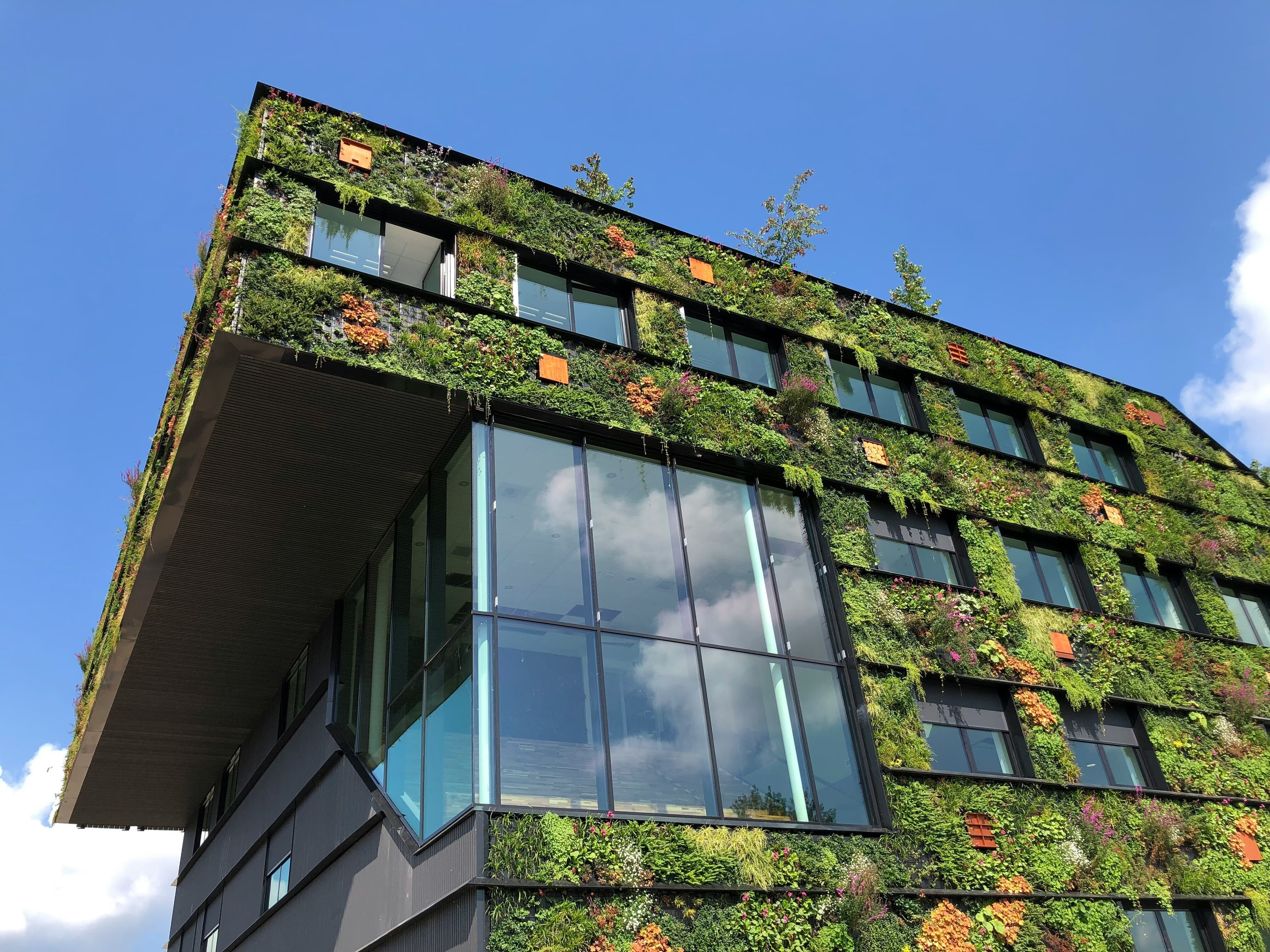SDIM: Innovation for Tough-To-Decarbonize Industries
Scroll down for full podcast transcript.
Sourcing and scaling viable innovations to decarbonize ‘hard-to-abate’ sectors like mining and aviation will be critical to the success of the Sustainable Development Goals. How can we leverage cutting-edge technologies and adopt novel strategies to accelerate the race to net-zero in these sectors?
This is the full audio from a panel discussion at the Sustainable Development Impact Meetings 2023.
Speakers:
Vivek Salgaocar, Director and Co-Founder, Vimson Group
Shahrukh Shamim, Chief Executive Officer and Co-Founder, EnviCore
Emanuela Orsini, Digital Content Specialist, World Economic Forum Geneva
Benedikt Sobotka, Chief Executive Officer, Eurasian Resources Group Sàrl
Annie Hills, Senior Adviser on Innovation to the Special Presidential Envoy for Climate, US Department of State
Watch the session:
Read more:
Find out about UpLink:
Check out all our podcasts on wef.ch/podcasts:
Join the World Economic Forum Podcast Club
Join the World Economic Forum Book Club
播客文字稿
Emanuela Orsini: Hello and welcome back to the Sustainable Development Impact Meetings and to a session on how technology and innovation can play a key role in helping hard-to-abate sectors in the race to decarbonise. I'm Emanuela Orsini, broadcasting to you live from the World Economic Forum studio here in New York City.
As the push to meet the targets set out in the Sustainable Development agenda intensifies, the demand for technologies that cut emissions from heavy industry is growing.
您读了吗?
SDIM23: Everything you need to know about Day 4
SDIM23: Everything you need to know about Day 3
US Treasury Secretary of Janet Yellen: SDIM23 Remarks in Full
SDIM23: What are the Sustainable Development Impact Meetings – and what to expect
What can we do to achieve our SDG and climate goals? Here are the answers we got at SDIM23
The International Energy Agency has said that 50% of emission reductions required to achieve net zero will come from technologies that are not yet available or at the required scale. Now, this is especially challenging for the so-called hard-to-abate sectors such as iron and steel shipping, cement, aviation and mining. According to the UN, heavy industry is the second largest source of CO2 emissions, accounting for 25% of all CO2 emissions worldwide. So how can we create more opportunities to accelerate innovation in these sectors and reduce costs so these solutions can be rapidly deployed now over the next 45 minutes? We'll explore this question, (and) the challenges these industries face. What needs to be done to solve them? And take a look at some of the solutions already being deployed and are showing us the way to a more sustainable future.
And we'll also talk about Uplink, the World Economic Forum's platform which is supporting and scaling purpose-driven start-ups all over the world. Entrepreneurs with the kinds of solutions we need more of, if we're going to succeed in meeting our decarbonisation and climate goals.
We'll take a look at mining and aviation a bit closer. But first, let's introduce today's panel. Joining me today is Vivek Salgaocar, Director and Co-Founder, Vimson Group. Thank you for being here. Benedikt Sobotka, CEO of Eurasian Resources Group Sàrl. Thank you for joining us. Annie Hills, Senior Advisor on Innovation to Special Presidential Envoy for Climate from the US Department of State. Thanks for joining. And Shahrukh Shamim, co-founder and CEO of EnviCore. Thank you all for joining me here today. Now, Annie, I want to start with you for our wider audience watching who may not know that much about the topic, can we talk about some of the biggest challenges the hard-to-abate industries face in this green transition? Let's start from the beginning.
Annie Hills: Absolutely. So I think you did a great job of laying out what we actually mean when we talk about the hard to abate industries. There are really two things that we're talking about - usually, we're talking about heavy transport. So think about long-distance shipping and trucking and aviation as well as sort of heavy materials and heavy industry. That's where mining comes in as well as steel, aluminium, concrete and chemicals. What makes these sectors hard to abate and the reason that we call them that is because we can't use the levers that we traditionally think about. When we think about decarbonisation, we might think about energy efficiency or switching to clean energy. Those levers can be used for the hard-to-abate sectors, but they won't get us all the way to a decarbonised solution.
And the reason is that these sectors essentially have fossil fuels baked into the processes that they're using. So you think about transport, you're going to combust fossil fuels in order to drive a car or take a plane or a ship. Similarly, when you're thinking about the heavy materials, oftentimes fossil fuels is actually an input into the processes that are being used or in some cases, like concrete, it's actually a chemical output. You make CO2 and you make concrete. So it's much more difficult to actually get rid of the CO2 in these hard-to-abate sectors. So what we actually need to see in the hard-to-abate sectors is innovation in the way that we are doing these processes. The good news is that innovation largely exists. It's just not up to scale yet. So we need to have the will and the capital to actually scale these innovations and as well to think about how to do processes that we've done for a long time that might have heavy assets, expensive assets with long life cycles. We have to have the will to make changes to those processes as well.
Emanuela Orsini: And so, how can we make those changes? What are the biggest barriers?
Annie Hills: I think, like I said, one of the biggest barriers - there's will there's the need for capital in order to change these processes. And then we need to scale up innovation, which I know is something that we'll talk about today. Actually take these technologies that have been proven maybe on a small scale and make them something that can be used at commercial scale.
Emanuela Orsini: And so you are a member of the First Movers Coalition. So it's an initiative from the Forum, as well as a coalition of companies that create the necessary demand for green technologies and also support the purchasing power needed to decarbonise 12 to 8 sectors. So what role can governments play in advancing innovation?
Annie Hills: That's a great question. And I'll just say first, the US government has been extremely pleased to co-launch the first movers coalition with the World Economic Forum and to now see I think we have over 110 purchasing commitments into hard to abate sector. So we're extremely thrilled about where we are today.
And there are a lot of roles that government can play and I'll focus on a few. The first thing that government needs to do is to create policy and incentives that will encourage these changes, these difficult changes in the hard-to-abate sectors. If we look at the US, I think that's a great example of where we are leaning in on the required policies with tax credits 45q, 45v. These are ways that we're providing money to scale up carbon capture or to scale up hydrogen, which sort of underlie the hard-to-abate sectors' solutions.
We also are providing direct funding for industrial hubs or for hydrogen hubs. So we are actually putting out the policy and the funding behind addressing those sectors. I would also say the government plays a very important role thinking about infrastructure. If you think about, again, any of these hard-to-abate sectors, there's a real infrastructure component to them as well. So for shipping, you need bunkering. You need to know where those fuels are going to be. If you're thinking about long-distance transport, you need to understand where charging infrastructure is. Similarly, you need to know if you're trying to do steelmaking with hydrogen, where are those hydrogen pipelines going to be? So a little bit of clarity on the infrastructure, government can support, both in creating clarity so that you can make clear investment plans and also actually helping to push forward that infrastructure.
The final thing that I'll say on what governments can do is that governments are actually also a major buyer. When we talk about demand signals on the purchasing side, it's important for governments to recognise that in many cases we are the largest purchaser of concrete, of steel, we have fleets. So it's important for us to think about our role as a buyer as well.
Emanuela Orsini: Now the First Mover Coalition supports over seven sectors, including mining. So I just want to focus a bit more on the mining sector. Benedikt, from a private sector perspective, how is collaborating with different governments been beneficial for your organisation in working to decarbonise?
Benedikt Sobotka: The mining industry because it's in many host countries, is such an important employer and source of infrastructure, source of power generation and by its nature has a very strong stakeholder component. And those are obviously governments and civil society and the communities that live around our operations in some cases. And we're in 20 countries and in some cases we're the only company that exists at that location, which means we provide not just for the jobs, but we provide for the medical services, for electricity supply, for water supply, for wastewater disposal. So we do a lot more than just the actual business, which means the public-private sector cooperation is inherent in what we have to do and where we operate. Now, the challenges is that governments, they obviously want investment and they want employment. But on the other hand, they also want mining companies to be a responsible citizen. Now, as we now see the supply chain for the energy transition virtually exploding, I mean, we've never seen anything like this before in history, as is the biggest purchase order in the history of the mining industry, the green energy transition, because just so much more material is going to be needed.
At the same time, there's so many obstacles for us to expand our production. If we want to race to the top as opposed to a race to the bottom, because it's easy to expand production when you race to the bottom, you just break the rules. And a lot of companies do that. We see that every day. But if you want to do the right thing, it's incredibly difficult to actually expand production to bring more of these energy transition critical materials to the market and to do that in a sustainable way. And what we find in some of the regions we operate in, Asia or in Africa or South America, is that the governments are very supportive and they push us for more investment. But we don't actually get the reward for being good companies the way that we should be getting the reward for being the good companies. The challenge being here, it's a commodity industry and a commodity in itself means that the price is the same, whether it's one unit produced with a very high carbon footprint or one unit of a certain metal produced with a very low carbon footprint, the price is identical. And so there's no differentiation. So good companies and companies that try to do the right thing that actually do not get rewarded because the price for one unit of iron ore is the same as the next unit of iron ore. And that is a challenge. If I can build on what Annie said, and it's not just the hard-to-abate emissions that are baked into the production process and there's a lot you can do about electrifying your truck fleet. You can use renewable energy at coal generating in your operations. You can use different types of transportation, you can move rail as opposed to trucks.
There are many things you can do, but there is inherent differences in and the product itself. So for example, if you produce an iron ore which has a low content of iron ore, automatically your CO2 footprint further down the line, in the steel process, is going to be significantly higher than when you produce a concentrate that is very high in iron because that will mean you have significantly lower carbon emissions in the process downstream. And there's very little reward for that increment in being a better producer of a product that has inherently a better carbon footprint.
So that needs to change and I think we need a lot more transparency around the provenance of the material, not just from an ESG point of view, but also from the emissions point of view. So we're working on that with a number of our partners. For example, at the global battery lines that I'm co-chairing, the 150 member multi-stakeholder organisation, which was founded originally at the World Economic Forum. And we're working on a tool that's called the battery passport, which for all the materials that go into a battery, end-to-end, from cradle to grave, tracks CO2 emissions, because the difference is huge. And this way you can give consumers a choice and then there's an opportunity for price differentiation.
Emanuela Orsini: And so you mentioned earlier that the total mineral demand for clean energy technologies will double, as the International Energy Agency says. And by 2040, we think that that will happen. So how else can you prepare your organisation to respond to this demand? And what are the biggest challenges?
Benedikt Sobotka: Well, the numbers are staggering. And it's the World Bank estimates that by 2050 the mining industry will have to invest an incremental 1.7 trillion USD into mining expansion, infrastructure, associated processing capacity and so on. Now that sounds like a huge number, but for the mining industry that is an incredibly huge number because our average annual CapEx is maybe $100 billion in the industry. So it's a tiny industry that gets hit with this expectation to be doubling production capacity in a very short period of time. So there are challenges on organisational design, on human resources. The industry is very short of talent because ten years ago nobody cared. It was an industry that was the people from the dark side of the moon, they're part of the problem as opposed to today. We're part of the conversation. We're part of the solution, or at least many people see us as that. So expanding the supply chain is going to be an incredible challenge.
But look, it's a great opportunity for business and it's a great opportunity also for innovation, because still today, the mining industry applies very much the same technologies and extracting and refining and processing and transportation that they did ten, 15 years ago. It's inherently a very conservative industry and we're trying to change that because innovation is going to make this industry so much more efficient and so much more capable in expanding and deploying capital in what is increasingly complicated, technically challenging jurisdictions and geographies, while at the same time trying to safeguard all the rules and requirements that are important under the ESG rules. So it's a big challenge, but it's a great challenge and a great opportunity for technology companies, for innovators, for start-ups to look at this industry and say, hey, let's shake up this dinosaur a little bit and see what it can do.
Emanuela Orsini: And so that's a good transition to Vivek. So, you're the director and co-founder of the Vimson Group mining company from India. You also co-founded or founder of Prospect Innovation. You've worked with start-ups in the mining space. So why did you feel that we need to start looking for technologies that would make mining more sustainable?
Vivek Salgaocar: Sure. So thanks actually. And just going off of what Benedikt said. One of the one of the things that I wanted to do when I joined our family business, which has been around for over 70 years, is seeing how we could actually improve our own operations. And the natural kind of next step for me was to look at the early stage technology environment for mining, as you would for any other industry. You would expect to find venture capitalists, you would expect to find incubators, accelerators, so on and so forth. I spent a couple of years trying to do it and I found nothing. And that was quite shocking to me, considering the size and the scale and the dependency of everybody literally on this planet, on the mining industry, to have nothing of an ecosystem for technology and early-stage acceleration incubation. It just did not exist.
And so that was a problem, but also an opportunity, but most importantly, I think, a responsibility. So being also in this industry, being part of a family business, I have the need to think in generations. And so therefore, how are we going to continue to stay relevant? Right. And so four and a half years ago started Prospect Innovation, which looks at early-stage technology for the mining process. What's interesting actually is that for the mining industry, you're using the exact same technologies that people are talking about all the time, right? All the very, very exciting technologies that get headlines are actually applicable to the mining industry. It's just that the innovators and the technology is actually not aware of the use case in the mining industry because the industry traditionally has been fairly closed off. And that's one of the things that we're trying to change. And that's also where, you know, partnering with the Forum actually helps in terms of changing that narrative and getting more people involved in the conversation and actually having a conversation to begin with, right? So over the years, it's been a short journey. It's been about four and a half years. We've now had about 30 companies roughly come through it from about a dozen countries. So the technology that does exist is just hard to find. And the question is how we can actually widen that funnel and expand the way in which we actually go through the selection process and actually match technologies with use cases, which is where we have the unique kind of position to be where we are both capital allocators as well as operators and producers, so we can then match it and then bring these companies actually to scale.
Emanuela Orsini: And so what are some of the challenges that you've seen in this space when it comes to carbon reduction goals?
Vivek Salgaocar: So I think the biggest challenge is actually trying to get people thinking about mining as a use case and as a dam or total addressable market or a use case. Right? So the thing is, if you look at the top engineering schools around the world, very few of the, you know, the brightest that are coming out of it are thinking about mining as something that they need to actually work towards solving and what the interesting thing there is typically when you are starting a company, you're looking for a use case where you have very low competition, a big potential market, and a way in which you can actually deploy what it is that you have been working on. The mining industry offers all of those things. It's just that, again, there's there's a lack of awareness and that in large part is also due to the industry and also because we've been more reactive and not proactive in terms of telling the story and talking about how critical the industry is and how of course, as with any industry, there's good actors and bad actors, but that doesn't necessarily have to mean that the bad kind of completely overshadows everything else. And that's unfortunately what the messaging has been. So for us, a big part of it is reaching out to companies saying that, hey, this technology is super fascinating. And actually this is a use case in the mining industry. Would you consider actually doing that and playing a role in that matching?
And what happens oftentimes is these companies are, in where they are at that moment, are competing against dozens, if not more, trying to solve the same problem. Whereas suddenly now you have a massive industry where you could be one or two or three people actually working on it. Your chances of success are high. And also, given the scale of the mining industry, every little incremental bit translates to a tremendous amount just because, again, of the size and the scale of the industry. So in terms, of just going back to your question, the biggest problem I think is just that awareness. And I think one of the best ways to kind of get over that is really getting more people involved and collaborating and making it more about the world rather than just the individual companies, which is what in many cases has happened in the past.
Emanuela Orsini: Benedikt, do you want to build on that in terms of some of the other challenges that you've seen and what else can be done?
Benedikt Sobotka: The biggest challenge in this industry is to apply technologies, particularly around emissions reduction. Yeah, that the use case is important and people are very conservative and no one's ever gotten fired for using the same the same production process they used 20 or 30 years ago. So we need to get a lot more risk-taking and innovation approach into this industry.
We need to get a lot more risk-taking and innovation approach into this industry."
”And of course, as also the demographics of this industry changes, I mean, I was appointed chief executive officer when I was 32 years old, and I was by far the youngest person in this industry. And today, still ten years later, I'm still the youngest CEO in this industry. So it shows something, the demographics are not they're not actually not regenerating. This industry is not getting any younger. And that also means that to some extent less interest in trying out new things because you will not see the results ten years from now. We have to change the attitude towards innovation and of course the price. The problem we have today is we have is to reduce emissions in your construction, in your production, your processing and your approach. There's very little reward for that other than being a very good citizen. And particularly today as we compete, I mean, one unit of a metal that's, for example, produced for a battery competes with all the other units of metals that are produced somewhere else in the world. And for the consumer, there's no difference or that this unit has been produced using lignite, coal-fired power with a very dirty production process.
Although it's been based on hydropower, it doesn't see the difference because you can see the element looks the same. So there's no reward for actually being better or trying to be better. So it's the use case we're trying to apply, but also then being able to say this actually saves us money or this is a good business case. I think we need to both. We need we need market-based mechanisms for more innovation in the industry. So we need to bake that into the proposition.
Emanuela Orsini: So how can we we reduce the costs?
Benedikt Sobotka: To give you one example, I'm also a member of King Charles' Sustainable Market Initiative. It's a group of about 300 CEOs that are trying to apply market-based solutions for, for example, hard-to-abate emissions and industries. And so one one big area that we think in our industry that will dramatically reduce the emissions is renewable energy. Today, most mining companies still do not use renewable energy.
And of course, it's inherent in the process because you need to have 365 days, 24-seven, because the plants always run, right? A mine doesn't stop and it's like a big refinery. It always runs. So you always need power. And that makes it very difficult because then you have to have not just the intermittency of problem-solve but you also have to have storage. This is where the batteries come in. So people talk about the impact of the batteries they have on the transportation sector. I learned an interesting fact yesterday. Electric vehicles alone last year reduced crude oil consumption, replaced crude oil consumption by 1.5 million barrels a day. This year, it's already 2 million barrels a day.
That's the entire production of Mexico. If you forecast this to 2030, 2040, we're looking at a replacement number of something like 17 to 18 million barrels a day, just by electric vehicles. That's the entire production of the United States of America. So it is having a massive impact. But you need to have the same in renewable energy storage, because that will replace a lot of units, a lot of emissions in power generation. We believe that transportation and power generation are roughly 40% of global emissions. 30% of this you can replace or reduce by applying battery energy storage solutions in transportation and in energy storage. And that will come back to the industry because obviously, energy is a very significant part of our cost to make that sustainable is a clear objective.
Emanuela Orsini: Vivek, back to the start-ups that you've worked with, have you seen interest in funding for these start-ups? Is there momentum?
Vivek Salgaocar: Yeah, So it's an interesting question. Because hardware to begin with is difficult to fund because the the gestation period is much longer than, say, software. However, what's been interesting is that so the last 15 months, 18 months have been fairly difficult in terms of the fundraising environment for early-stage technologies across the board. What we've actually found is that a couple of our best performing companies have raised significant rounds at significant valuations in the last couple of months, actually. So what that tells us is there is a demand for it. As long as the right product market fit is actually there. So yes, it is challenging, but it is not impossible.
And I think this will only increase as there is more, you know, the conversation increases about what is needed and cost reduction for the material space as we grow to decarbonise and get to these goals. Right. So if you just throw out numbers again, if you want to get to these some of these 2040 goals, you have to be have to mine from now until 2040, twice the amount of copper that has ever been mined in the history of mankind. Right. That's a staggering number. So you cannot recycle your way out of this problem. You can't massively increase just mining in order to get there. It has to be a combination of several things. We're not saying that innovation is the only way. It's an important way and it has to be done. But there are several things that have to be done simultaneously as well. And the good thing about innovation and technology is that it touches multiple model facets of this very problem. Right? And so I think, again, it comes to awareness and having that conversation because the returns for just a financial investor are fantastic. But also it's truly a case of doing well by doing good because all of these things are actually going to reduce the impact that we have in the environment and actually enable us as a civilisation, as a, you know, as a race to actually get to these goals that we've set ourselves because of what has happened over the last century.
And so I think when you look at it, it's still staggering that despite all of this, you don't have venture capital funds that are focussed purely on technology like this. You have several that are maybe looking across the board and this forms a small slice of it, but yet you don't have any of those looking directly at this. We are hoping that that changes. We're playing a role in doing that. We're also investing significant capital of our own to do this. But that's, of course, one drop in the bucket. It has to increase and that's part of why also working with the Forum helps in terms of increasing that funnel and getting it to a much wider audience because that's what ultimately is needed. We need to get much more people involved. But the good news is the returns are there to actually justify that.
Emanuela Orsini: So now I want to go to an entrepreneur in the mining space, Shahrukh. You're the CEO of a Start-Up called EnviCore, which helps to repurpose the waste created by the mining industry. And you're also part of the Uplink community. You were selected as one of our circular economy innovation challenges. So can you tell us a bit more about what your company does and the problem you are solving?
Shahrukh Shamim: Definitely, thanks for having me. So we are currently a Canada-based company and our whole focus is and we are a strong believer of cradle to cradle. So we take waste or technically it's raw material for our process and we convert that into a low-carbon cement material. So this raw material can come from any sources, be it mining waste. Basically, after any hydrometallurgical operation, we can work with pretty much any energy transition based, metal-based, or maybe it's coming from precious metal based. Apart from that, we can work with construction, industry-based, simple demolition-based, or pretty much any smelting slag coming from nickel, copper or any other metal smelting units. We take that material, we convert that into a cement replacement that can go as high as 40%, basically reducing a lot of built carbon or embodied carbon in built environment. Additionally, what we have been constantly trying to do is to push this technology to a very big commercial scale so that we can prove the viability and also the sustainability of the process by reducing the carbon emissions from both mining and also from the construction industry.
Emanuela Orsini: And what are your biggest needs right now as a Start-Up? How have you seen the environment going for you?
Shahrukh Shamim: For us, typically for any start-ups like funding is a major, major need. Apart from that, I think the government support specifically operating in mining and both in construction, where this is pretty much regulatory driven. So having that support from government side where regulations doesn't act as a hinder or block for us rather than as a support. So that's what's really important. And then also taking on the point that for us, incentives also matter a lot like the way that we produce our (inaudible) versus the ones in the market. We have to differentiate between the benefits of our material compared to what's already in there. So there should be some sort of like support. Additional support provided either by the government or maybe simply in the industry itself.
Emanuela Orsini: And what inspired you to start this company?
Shahrukh Shamim: So I actually came from India in 2016 to Canada, and I saw oil sands tailings, which is actually in my backyard pretty much in northern Alberta. And the tailings that that was getting produced during the oil extraction process, it was getting stored in massive ponds called tailings ponds. When we saw the volume of it, it was around 1.6 trillion litres of wastewater just accumulated in a land of 220 square kilometres and footprint. This problem itself was massive. So that's when we started with this initiative that let's go after this particular industry and try to solve this from a sustainable perspective. So to reduce the inventory of these waste getting generated from the oil sands and then we basically started realising that it's not just one industry, or oil sands. The metal mining industry is exactly producing a similar or even higher quantity of waste material that can simply be now reused or repurposed into a useful product for another industry. So that was a big motivation for us. And then the Government of Alberta actually came up with a much needed support at that point of time to help us getting that platform so that we can start working on commercialising our technology.
Emanuela Orsini: And what importance do partnerships and collaborations have for your company?
Shahrukh Shamim: Oh, those are the most important things for us, and we always strive for collaboration because we really believe that in these particular industries, if we want to make a meaningful impact, we have to do it with collaborative efforts with major stakeholders. For example, we are working with major mining companies in North North America, Latin America, also in Europe and in Asia, and with cement companies as well in similar regions to make sure that we can identify the market, we have the major people already involved in the project who can not just support from: Yes, we are giving you the permission to operate on our land, but also the much needed operational support, because as a Start-Up, we really need all those kind of help from not just regulatory perspective, but also from a scale-up perspective as well.
Emanuela Orsini: Vivek, back to you. We're happy to announce this partnership with Vimson Group here with UpLink at the World Economic Forum. We're going to be working together on selecting and supporting entrepreneurs in the sustainable mining space. So what do you hope to achieve with this partnership? You mentioned a bit before visibility, awareness, and what kind of innovations are you looking for?
Vivek Salgaocar: Sure. So thanks. Thanks for that. And it's something that we're very, very excited to commence. I think ultimately what what's needed is to get this at a global scale. And I think Uplink, which is what the World Economic Forum has built as a platform, is tremendous in terms of increasing that visibility and widening that funnel. So what we hope to achieve is a number of things. So over a series of challenges over the next several years, what we want to do is, is figure out specific use cases and specific problems that the industry faces and then have technologists and entrepreneurs really address them. Because, again, you know, moving it out of the sort of black box type situation where what people aren't aware of what these problems are, even though they have solutions that can actually address them, is what is one of the things that we're trying to do. So it's also exciting because there's a lot of technology that already has been deployed in other industries that just has to be tweaked a little bit for the use case in mining, which again, I think will form a big part of this. So in terms of what it is that we want to get done, there's several areas I think that are quite important. First of all, just the exploration side of things I think is very crucial because we are going to have to find new deposits because existing deposits are getting depleted, which makes which makes it harder and harder to actually mine them. And that obviously increases your footprint. for example. You also need to figure out if there's a better way to deal with dealings in waste, because that's a huge (space), it's now looked at as a problem, but it could actually be a huge source of raw material. So that's another possible area that we would look at. So similar to that, the several things that we're thinking about, which we will in due time launch. But I think that's something that is hugely exciting because it should hopefully really multiply the effect that we have that we've tried to have. We've had 30-odd companies in the last four and a half years. We can multiply that several times and do more than that in a much shorter period of time through this collaboration. And I think what it does is not just bring in Start-ups, but also most importantly brings in the industry to actually work together and collaborate and have these conversations and most importantly, actually take a chance on these start-ups and actually pilot them, invest in them and give them a shot. Because ultimately it's not just about how much of an impact they're going to have, but also ultimately these are going to end up saving, saving these companies massive amounts and contributing to their bottom line. That's truly going to be that double or triple bottom line. And that's something that we're very, very excited about.
Emanuela Orsini: Very exciting, thanks. So on Uplink, and our challenges we have right now a sustainable aviation challenge open. So before I get to the details of that, Annie, talk to us a bit more about aviation and what are the biggest barriers when it comes to decarbonising the sector.
Annie Hills: Yeah, so aviation, I mean, all of the hard-to-abate sectors are complicated and aviation is no exception. I'll give you a couple of the barriers that I see but recognise this is not exhaustive. One of the first ones is something that I think we've heard a lot about in the conversation today with regards to mining and that's cost. Sustainable aviation fuels or other ways of decarbonising aviation are expensive and there's a question of how are we going to split that cost across the value chain? So how much is going to be borne by fuel suppliers versus by airlines versus by, you know, cargo carriers or passengers? I mean, to figure out how to split those costs across the value chain for something that we might have historically thought about as a commodity. Another thing that I'll just mention in terms of decarbonising aviation, one of the solutions that we hear a lot about is sustainable aviation fuels. What we often think of as attainable aviation fuels, biofuels or advanced biofuels. They're going to have issues scaling to meet the entire need of the aviation industry for reasons about trying to the amount of feedstock that's available is going to be difficult for sustainable aviation fuel to meet the entire need. So there's really going to need to be a portfolio of solutions in order to meet the aviation problem, too. That will include, you know, other pathways like power to liquid, as well as some of the other innovations that we're looking to spur through the aviation challenge. Essentially, we need to continue to innovate and find a whole suite of solutions that can help us to meet the entire need of the aviation sector, which is immense. There are many other barriers as well. Regulatory is one that comes to mind. I probably won't go into those because we could have a whole another session on it, but we'll stop there.
Emanuela Orsini: Yeah, it seems like a huge sector also that it seems almost insurmountable. Like there's just so many parts, as you mentioned, across the chain to get to that. So I'm wondering who else needs to be involved to get to this point?
Annie Hills: You know, there need to be almost every stakeholder needs to be involved. And we are already seeing that today. We need to have airports involved. We need to have local government involved. You need to have the federal government involved, need to have internationally, have folks involved and are thinking about different flight paths. So that's going to be very important. Different corporations, we need to have suppliers and buyers involved and all of that is beginning to happen. But that partnership and that value chain building and the bringing together of many stakeholders is a really critical next step that needs to happen in order to meet the need in aviation.
Emanuela Orsini: And do you think, well, we'll do it on time? We're a bit tight on time.
Annie Hills: Here's what I'll say. And I wish I had a crystal ball and could give you the complete answer on that. But what I will say is we're seeing really promising coalition building right now. Actually, just recently, a number of first movers coalition members, Ecolab, Bank of America. I know that I'm forgetting somebody and it'll come to me, Oh, and Delta. I was going to say I'll tell you who it is, aunched a staff hub in Minnesota, and they're really working to work with Minnesota, to work with a number of different stakeholders, to both invest in R&D, to invest in actually building out this general aviation fuel and the other aviation technologies that are needed to meet the challenge. And we're seeing more and more of that hub approach as well and thinking about specific flight paths to get started. So we need to continue that momentum. But we're luckily seeing that begin to coalesce on the ground now.
Benedikt Sobotka: Maybe if I can just build on one point here, what we believe, what we're seeing and we see this as the work we do at the global battery lines is the rate of innovation in the battery sector is going to make electrification of the airline industry a lot more feasible the next few years. And of course, we will start with shorter, shorter areas. We will have support batteries that give you more range and so on. But there's a tremendous amount of innovation. The rate of innovation in batteries is absolutely staggering. Who would have expected ten years ago that you could drive a car for six, 700 miles today, an electric vehicle? So you would expect something else to happen in aircraft as well.
Emanuela Orsini: Because right now on aircrafts, the batteries for airlines are quite short. The time for flights with the electrical aeroplane is quite short, short flight time . So hopefully in a few years.
Annie Hills: Hopefully Benedek will solve that (laughs).
Benedikt Sobotka: There are also some interesting start-ups in that space as well and the electrification of aircraft.
Emanuela Orsini: All right, so on the topic of start-ups, I want to touch a bit more on the sustainable aviation challenge that we have open on Uplink. So we're calling for tech solutions, including sustainable fuels, propulsion technologies and value chain innovation. So what did these start-ups really need to scale and how can we make them commercially available globally?
Annie Hills: Well, the first answer, of course, is funding capital. I think that we hear that across the board. What I hope that this challenge can bring and what will be important and again, this is drawing another theme of this conversation. There needs to be the demand for these technologies that may be more expensive. We need to know that there will be a market for them if they come to market, and that can help actually a Start-Up to make their own business case and to invest further. If there is clarity that there will be a buyer on the other end. So one of the things that we're hoping to do with this challenge that I hope to see is a real connection with the folks who are looking and actively seeking for and asking for these innovations that will be a part of it. And hopefully that can help to make a stronger investment case for the startups who do join this challenge. And that will be one important part of the solution.
Emanuela Orsini: So for our audience watching, if you have an innovative solution to help decarbonise the aviation industry, head on over to the UpLink website to find out more about the sustainable aviation challenge. And you have until the 2nd of October to submit your solution. So out of all of the submissions, 10 to 15 winners will be selected and they'll become Uplink top innovators. They'll benefit from connections to industry buyers and access to market leaders, potential partnerships that can help them grow. So they'll also become part of the Uplink innovation ecosystem, which will give them access to selected World Economic Forum events like this week's SDIM meeting and get targeted support, networking and visibility opportunities. Now, I'd like to ask one final question for all of you. In a year from now, what would you hope we are sharing as far as progress is concerned when it comes to accelerating innovation within these industries?
Vivek Salgaocar: Sure. As I said, more of what we've been seeing, which is more appetite for investment, more appetite for actually entrepreneurs looking for solutions and working on solutions for the mining industry, more appetite from mining industry players themselves to actually take these on, fund them and pilot them. And I think also a shift in the narrative from the mining industry having the stigma to actually then being seen as actually part of the solution because it is the very beginning of the supply chain and there's a lot of conversation happening about sustainable supply chains. So I think a shift that is already taking place, but hopefully accelerating that shift on all those counts.
Annie Hills: Yeah, I think that was a great answer. I'd just say I hope you continue to see the momentum that we're seeing now, keeping up, not letting down that investment appetite. Like we mentioned the investment spaces is in a bit of a receding a bit right now. But for very early-stage innovative solutions, the investment appetite is actually growing. And we saw that in the last year. So I hope we continue to see the acknowledgement of investment, need for investment innovation. And I also hope that by this time next year, when we come back to SDIM, we're talking not just about, you know, the appetite of potential buyers, but we're talking about projects and partnerships and really specific announcements that have grown from the recognised need today.
Benedikt Sobotka: Probably three things. I think we're going to see a lot more collaboration across industries and within industry sectors. So end to end because you need to have a more collaborative approach to this than to many other problems. And so actors that actually historically never applied to work together, they're now starting to have this conversation, which is great. The second thing is you'll probably see more geographical diversification of innovation today. The vast majority of innovation in green technologies come from China by far, because the largest renewable energy markets, the largest producer of batteries in the world, the largest producer of electric vehicles. So today, this is the centre of the renewable energy, the green energy transition. Most people are not aware of that. It's also a source of over half of the investment in the mining industry. Right. So it's all about China. We're going to see more diversification to other regions as well, which is great because there's going to be more, more innovation.
And of course, the the third aspect will have to see more investment going into space and investment that should not just go into new technologies for new industries, for emission reduction, but there's so much efficiency gains you can have in the historic original energy transitions and the energy systems. So things like flaring, one of the biggest sources of emissions. It's got nothing to do with the European energy. And it's such an easy problem to fix with money. It's an engineering problem, right? It is not a regulator. It's an engineering problem, which means you throw money at it, you can solve it. So there's so many things we can improve in these hard-to-abate industries that are actually not so hard to abate. It just takes will funding and implementation, which is something the private sector is usually very good at if you let them do it.
Shahrukh Shamim: So from a Start-Up perspective, I really believe that we will start seeing a lot more collaboration from the mining industry and we have already started seeing it since last year. For us itself, whenever we are talking to any mining company, the openness we can clearly assess that they are now really moving from, yes, we are a conservative industry to more like, yes, we really want to innovate. And this is happening not just in the mining but also in the construction industry where there are a lot of initiatives are coming where they are actively pursuing even early-stage technologies, where they can nurture them and basically take it forward to do at a stage where they can commercially deploy it. So that's definitely going to be accelerating in the next year or so. And then the funding is really important for a lot of start-ups even in the pre-seed or seed stage, like we are looking at really good deals happening with very good valuations that actually gives an incentive to entrepreneurs to start working towards like solving these type of problems. So definitely these two aspects would be accelerating in the next year or so.
Emanuela Orsini: Okay. Well, that brings our session to a close. Thank you so much for joining us and joining me today here in this session. Thank you. Thank you for having us.
Vivek Salgaocar: Thank you. Thank you.
Emanuela Orsini: And I want to thank you all the audience for being with me here today as well to talk about big challenges in the tough to decarbonise sectors. There's still a long road ahead, however, as we've just seen, accelerating innovation through collaboration and through key initiatives can be a key driver for the transition towards net zero. So if you'd like to learn more about how to support purpose driven entrepreneurs that are trying to tackle some of the biggest issues facing our planet, such as water security, the conservation of nature, protecting the ocean, the circular economy and many more topics, Make sure to visit UpLink. We'll leave you now with the launch of the video of the Sustainable Aviation Challenge. Thank you so much for tuning in. We'll see you next time.
Film: We are now facing the challenge of reinventing flying for a net zero emissions future. We will need new propulsion system routes running on alternative fuels, new materials, new aircraft designs and operational changes that can deliver emission reductions. It will take a lot of great minds to decarbonise aviation, and we're looking for the best ideas out there.
Film: So we're looking for three types of main innovations sustainable aviation fuel and other novel propulsion technologies as kind of the first bucket. The second are value chain innovations, anything from feedstock to combustion and propulsion all the way through market infrastructure that helps us transact environmental attributes at the end. The third bucket of innovation are those innovations that come from other sectors that we can apply to decarbonise and revolutionise aviation. What we're really excited about is that the innovators will also benefit from the collaborations with the supporting partners, which represent some of the most innovative leaders in aviation. And that will look like things like technical support, business support and financial support.

